What is Computer Vision Technology, and Where is it Used?
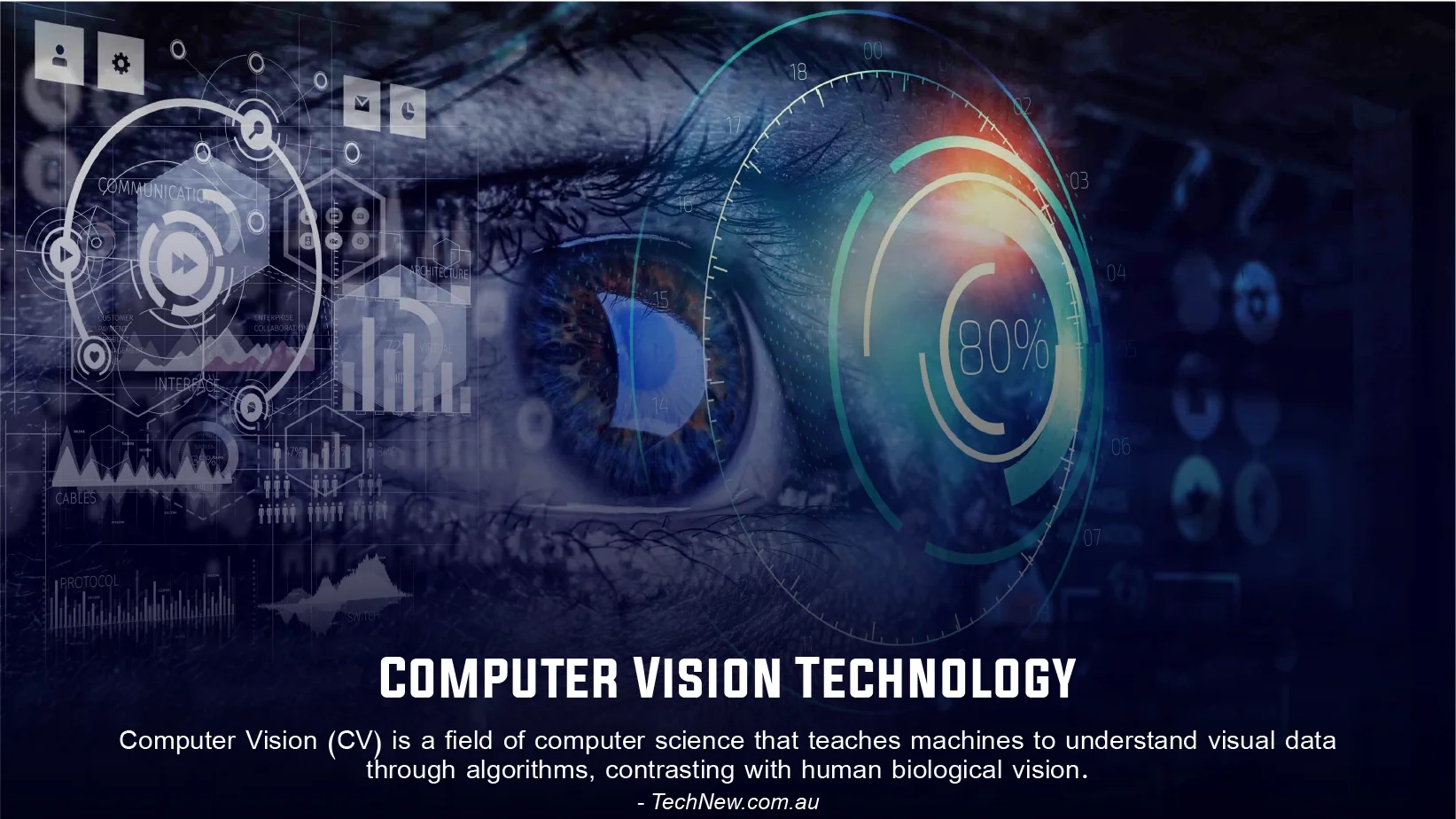
| Computer vision (CV) is a branch of computer science. It enables machines to interpret visual data. CV processes digital images and videos using algorithms. Unlike humans, computers rely on algorithms rather than biological vision. |
Have you ever noticed how your phone recognizes your face or how self-driving cars navigate streets? Welcome to the world of computerized vision technology. It’s transforming everything around you. This technology helps machines interpret images, shaping various industries and aspects of daily life. Yet, as it becomes more widespread, concerns about privacy and fairness start to surface.
What is Computer Vision Technology?
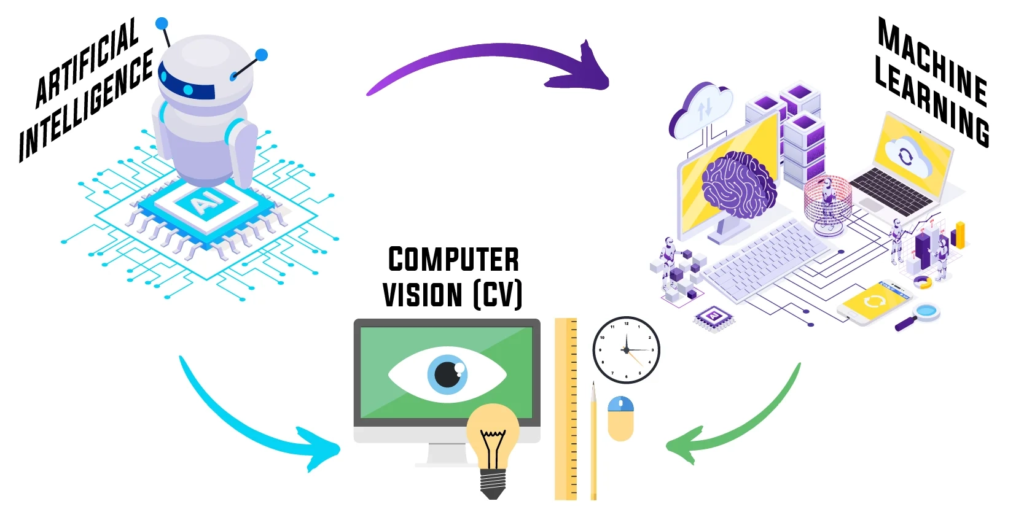
Computerized vision technology, a subset of artificial intelligence, enables computers to interpret the visual world by analyzing digital images and videos. This technology utilizes advanced algorithms and deep learning models to identify and classify objects accurately, akin to human vision. With its diverse applications across industries, computer vision has become a powerful tool in artificial intelligence. As data generation continues to surge, reaching 2.5 quintillion bytes daily, the field of computer vision experiences exponential growth, driving its expansion and development.
Meanwhile, The Computer Vision market is anticipated to achieve an 11.69% annual growth rate (CAGR 2024-2030), reaching US$50.97bn by 2030.
History of Computer Vision technology:
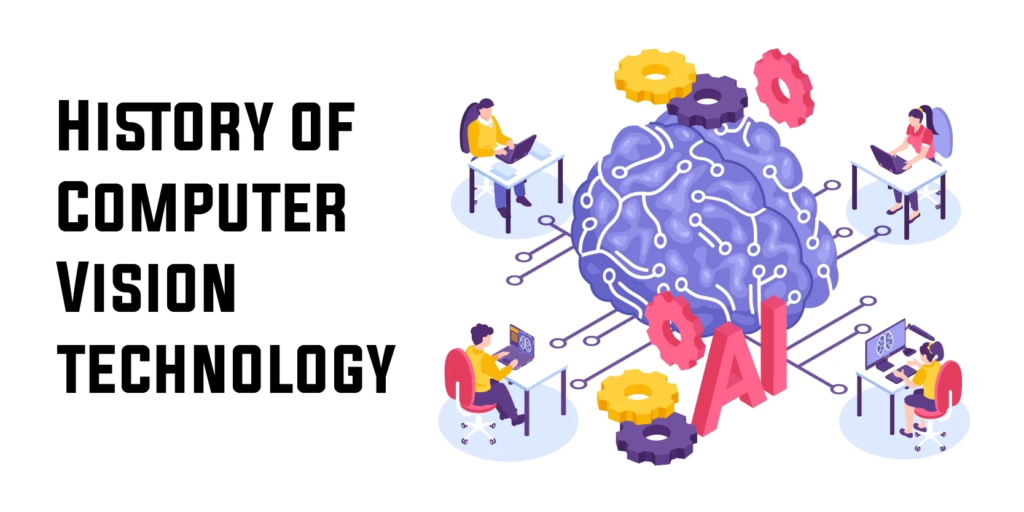
1. Early Research and Discoveries:
Scientists and engineers have dedicated approximately 60 years to developing methods for machines to perceive and comprehend visual data. In 1959, neurophysiologists conducted experiments exposing images to cats to observe their brain responses. They observed that cats reacted primarily to hard edges or lines, indicating that image processing begins with basic shapes like straight edges. Simultaneously, the first computer image-scanning technology emerged, enabling computers to digitize images.
2. Advancements in Computer Vision and AI:
By 1963, computers could convert 2D images into 3D forms. The 1960s also witnessed the rise of AI as an academic discipline, initiating efforts to address the human vision problem.
3. Introduction of OCR and ICR Technology:
In 1974, optical character recognition OCR technology debuted, capable of recognizing text in any font. Likewise, intelligent character recognition (ICR) could interpret handwritten text using neural networks.
4. Applications of OCR and ICR:
Since then, OCR Software and ICR have become integral to various applications, including document processing, invoice management, and mobile payments.
Computer Vision Algorithms:
| Task | Description |
| Object Classification: | Determining the main category of the object captured in a photograph. |
| Object Identification: | Identifying the specific type of object present in a photograph. |
| Object Detection: | Locating the position of the object within the photograph. |
| Object Segmentation: | Identifying the pixels that belong to the object in the image. |
| Object Verification: | Confirming whether the object is indeed present in the photograph. |
| Object Recognition: | Identifying all objects present in the photograph and their respective locations. |
| Object Landmark Detection: | Recognizing key points associated with the object in the photograph. |
How Does Computer Vision Work?
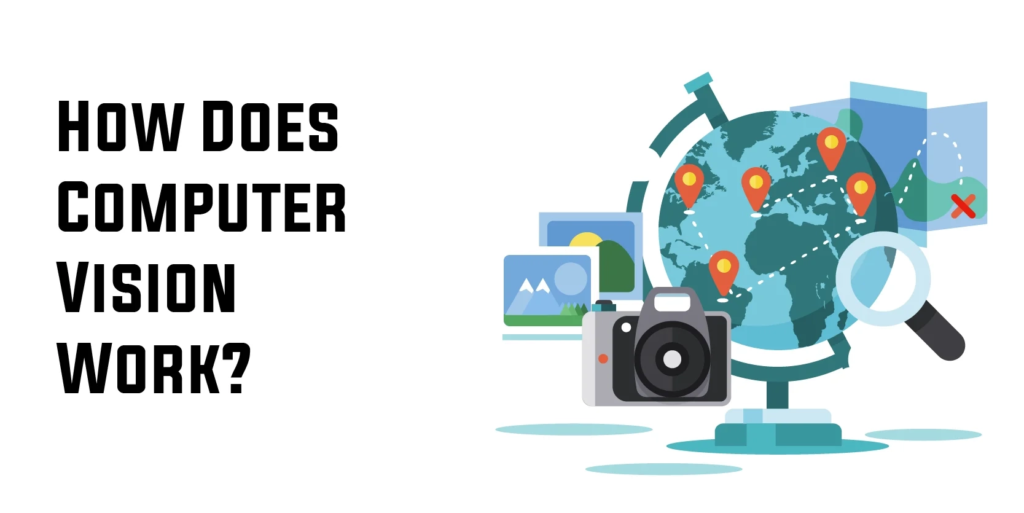
Imagine computerized vision technology as a high-tech detective, piecing together clues from images and videos to understand the world around it. It all starts with cameras or sensors capturing pictures or video frames like your phone snapping a photo or a security camera recording footage.
Next, these images go through a series of brainy processes, where algorithms analyze them, looking for patterns and features, much like how you recognize a friend’s face in a crowd. This is where deep learning comes into play—it’s like the computer’s superpower that helps it get better at recognizing things over time by learning from lots of examples.
Computer vision is like an intelligent detective using cameras and brainy algorithms to understand images and videos, making sense of the visual world just like you do.
Computer Vision Technologies Examples:
Let’s explore some real-world examples highlighting the transformative impact of computeried vision technology:
Face Recognition:
Imagine unlocking your smartphone just by looking at it! That’s the magic of face recognition. This technology is used for biometric authentication and security purposes, recognizing individuals based on their unique facial features. Whether accessing your device or securing high-level facilities, face recognition adds an extra layer of protection. However, About 176 million Americans employ facial recognition technology, with 132 million utilizing their faces on at least one application daily.
Gesture Recognition:
Forget buttons and touchscreens—gesture recognition is changing how you interact with devices. Imagine controlling your TV with a simple wave or playing games without a controller. Gesture recognition enables users to interact with devices through hand gestures, making human-computer interaction more intuitive and engaging.
Quality Control in Manufacturing:
In the world of manufacturing, consistency is vital. That’s where quality control powered by computer vision comes into play. Computer vision ensures consistent quality and minimizes errors by inspecting products on assembly lines for defects. This technology helps maintain high standards and customer satisfaction, from automotive parts to food packaging.
Use of Vision Technology in Various Industries:
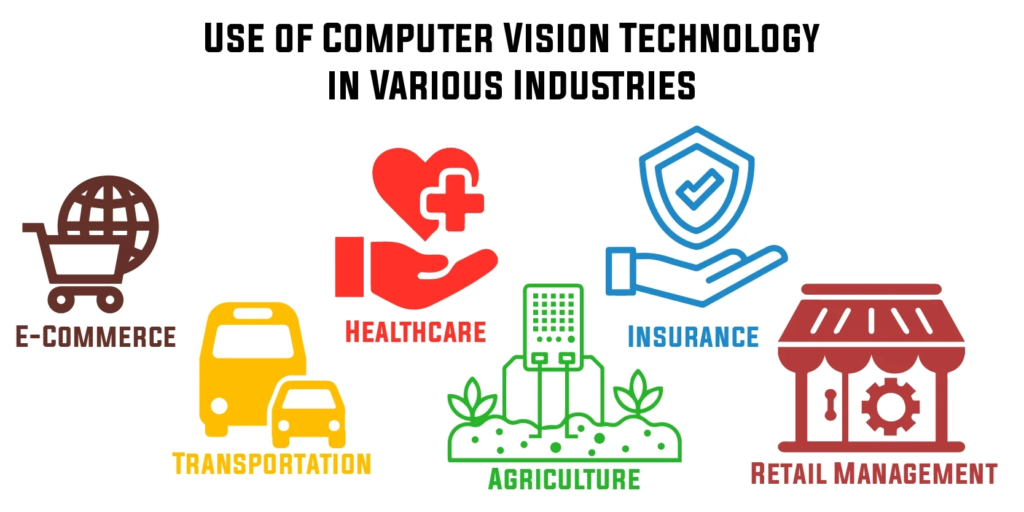
- Computer Vision in Agriculture
- Computer Vision in Healthcare
- Computer Vision in Transportation
- Computer Vision in E-Commerce
- Computer Vision in Security And Safety
- Computer Vision in Insurance
- Computer Vision in Retail Management
CV in Agriculture:
Who would’ve thought that farming could get a high-tech makeover? Well, thanks to computer vision, it’s happening! Computerized vision technology is like a guardian angel for crops, helping farmers boost productivity while minimizing environmental impact. Farmers are using drones and advanced algorithms to keep an eye on their crops and make sure everything’s growing as it should. It’s like having a team of expert agronomists working around the clock to ensure the best harvest possible.
However, there may be concerns regarding the accessibility and affordability of such technology for small-scale farmers.
Thus, the global market value of smart agriculture is projected to reach $33 billion by 2027.
Ultimately, Adopting computer vision in agriculture is crucial for sustainable farming practices and meeting the increasing demand for food production in the face of growing global populations.
- Computer vision helps farmers identify crop issues early on, reducing the need for manual labor and chemical use.
- By analyzing crop data, these technologies help farmers make smarter decisions about planting, watering, and harvesting, leading to healthier crops and bigger yields.
Modernizing Healthcare:
Computerized vision technology plays a crucial role in revolutionizing healthcare. It serves as a superhero that aids in early detection and precise diagnosis of health issues. For instance, when you get an X-ray or MRI, computer vision can spot fractures and cancers early on, leading to quicker treatment and better outcomes. Plus, surgeons can rely on real-time guidance from computer vision to enhance their precision and efficiency during surgeries.
- Faster and more accurate diagnoses
- Real-time guidance for surgeons during surgeries
However, there are challenges related to data privacy and security. Also, potential biases in algorithmic decision-making could impact patient trust and the reliability of diagnostic results.
Transforming Mobility and Transportation:
Get ready for a transportation revolution! It brings incredible advancements in automobile technology. Self-driving cars powered by computer vision. These are set to transform how you get around. Imagine cruising down the street in a vehicle that can spot obstacles and make split-second decisions to keep you safe. Your daily commute becomes so easy with fewer accidents and smoother traffic flow. Self-driving cars open up new possibilities for people with limited mobility, offering them newfound freedom and independence.
- Safer roads with fewer accidents
- Increased mobility for all, including those with disabilities
E-Commerce And Retail Transformation:
Welcome to the future of shopping! With computerized vision technology, it’s like having a personal shopper at your fingertips. Computers analyze your preferences and show you precisely what you’re looking for, making online shopping a seamless and personalized experience. And with virtual try-on technology, you can see how clothes fit without stepping into a dressing room. Say goodbye to guesswork and hello to effortless shopping!
- Personalized shopping recommendations
- Virtual try-on technology for better online shopping experiences
However, privacy concerns may arise when collecting and analyzing customer data. Also, ensuring accurate computer vision algorithms for personalized recommendations can be challenging. Still, retailers must integrate computer vision to stay ahead in the digital game. After all, meeting your demand for customized shopping experiences is critical in today’s retail world.
Security And Safety:
Safety is paramount today, and computerized vision technology is on the front lines. Security cameras with computer vision algorithms can detect suspicious activity and alert authorities in real-time, keeping you and your community safe. And when it comes to security checks at airports, facial recognition technology speeds up the process, ensuring a hassle-free experience while maintaining high levels of safety and security.
- Real-time detection of suspicious activity
- Streamlined security checks with facial recognition technology
But there’s a big concern about facial recognition tech and privacy rights. Using computer vision for security means you must think hard about privacy, ethics, and laws to do it right and ensure it works well.
CV in the Insurance Industry:
Have you ever wondered how insurance companies manage risks and handle claims? Well, computer vision technologies and AI are the superheroes behind the scenes! They help insurers assess risks for new policies and manage existing ones more efficiently. They’re like fraud detectives, sniffing out those sneaky fraudulent claims and saving everyone from unnecessary headaches.
- With computer vision and AI, insurers can detect fraudulent claims faster, saving time and money.
- These technologies use past data to predict potential fraud, making investigations smoother and more accurate.
- And guess what? They can even understand and analyze unstructured data to catch fraudsters red-handed!
However, there’s a worry about relying too much on automated decisions. Which might cause errors or biases in assessing claims. Computer vision in insurance is crucial to keep things honest and fair. This helps maintain integrity, transparency, and fairness while fighting fraud effectively.
CV in Retail Management:
Welcome to the world of retail, where computer vision is changing the game! Picture this: stores track your every move to make your shopping experience smoother and safer. They better understand your preferences and show you ads that make sense. It’s like having your shopping assistant right there in the store!
- Computer vision helps stores track inventory and determine the best product spots, making shopping easier.
- With AI-powered solutions, retailers can boost customer loyalty and engagement, making every shopping trip feel like a VIP experience.
However, keeping your data safe is difficult, especially when collecting and storing sensitive details. That’s why retailers need to make sure they prioritize your privacy and security. It’s all about protecting your information and keeping your trust.
So, computer vision significantly impacts different industries, whether it’s keeping your insurance premiums in check, making your shopping trips more enjoyable, or ensuring you have plenty of food on your tables. And who knows? One day, it’ll even help you to solve some of humanity’s biggest challenges!
FAQs:
What is computer vision technology?
What are the applications of computer vision?
How is computer vision impacting industries?
Final Verdict:
Computerized vision technology significantly impacts various industries, from healthcare to agriculture, retail to transportation. Its ability to enhance diagnostic accuracy in healthcare, streamline manufacturing processes, and optimize agricultural practices is revolutionizing operations and driving innovation. However, as with any powerful technology, there are concerns regarding privacy and ethical implications, especially concerning surveillance and data usage.
Despite these challenges, with responsible deployment and regulation, computerized vision technology has the potential to continue driving positive change and shaping the future of industries worldwide. Also, it helps to improve efficiency and enhance the quality of life for people everywhere.

Similar Posts
Top 5 Healthcare App Development Companies
Is Zoho Project Management Software the Right Choice for Your Business?
Is OmgFlix the Ultimate Streaming Solution? Unbiased Review